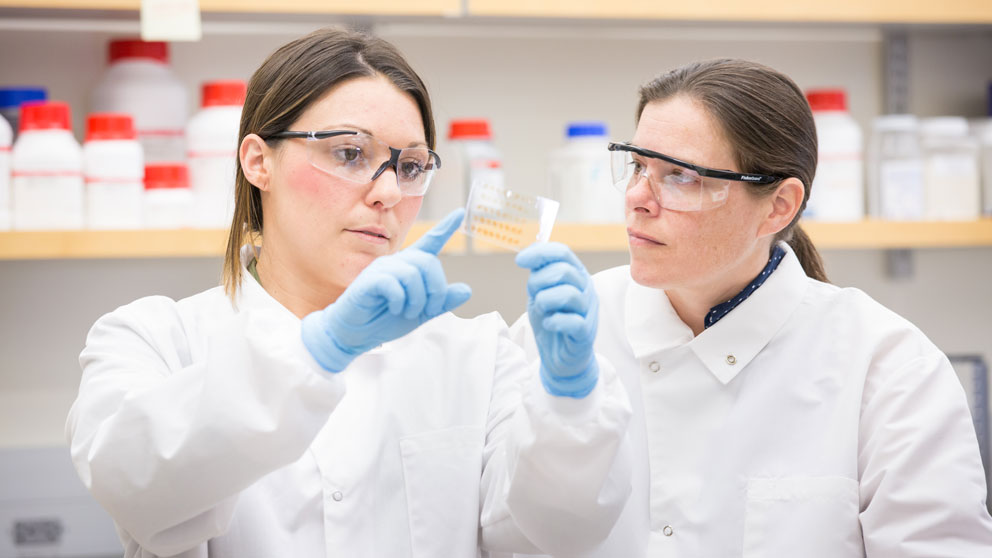
Associate Professor Catherine Kaczorowski, Ph.D., (right) is focused on understanding how the brain changes as we age so that cognitive decline may not be an inevitable part of growing older. Here she is interacting with graduate student Sarah Neuner. JAX photo by Tiffany Laufer.
Mechanisms identified mimic age-related memory decline in mouse models
Most individuals experience some degree of cognitive decline as they age, but the extent varies from person to person. Some have trouble remembering and learning new things, while others develop severe dementia and are unable to live independently. Alzheimer’s disease is one well-known form of progressive dementia, with no effective prevention methods or treatments.
While some environmental factors, like diet, play a role, much of the link between aging and cognitive decline risk lies in genetics. The details aren’t well-understood, but a JAX research team led by Catherine Kaczorowski believes that identifying the genes and processes involved will lead to therapeutic targets. Her lab’s ultimate goal is to protect individuals who are most susceptible to age-related cognitive decline and dementia.
Catherine Kaczorowski, JAX Associate Professor and Evnin Family Endowed Chair of Alzheimer’s Research, and graduate student Sarah Neuner previously identified a specific gene, heterochromatin protein 1 binding protein 3 (Hp1bp3), as a mediator of cognitive aging. Specifically, lower expression of this gene in the brain was associated with impaired cognitive function.
In their most recent publication in Aging Cell, Kaczorowski and Neuner further investigate the role of Hp1bp3 in age-related cognitive decline. The mechanisms they identify are very similar to what is observed in normal human aging:
- Changes to neuron behavior and gene expression
- Decreased excitability and plasticity of neurons, which are associated with learning and memory
- Increased inflammation from disrupted regulation of a specific micro-RNA
The authors conclude that “the discoveries made here, as well as in future studies, will help inform the development of therapeutics designed to target either Hp1bp3 or its downstream effectors in order to help promote cognitive longevity and reduce the risk of multiple age-related diseases.” In other words, this research brings us closer to understanding how to prevent or treat age-related cognitive decline and dementia, including Alzheimer’s disease.
Neuner et al. 2018. Knockdown of heterochromatin protein 1 binding protein 3 recapitulates phenotypic, cellular, and molecular features of aging. Aging Cell. https://doi.org/10.1111/acel.12886